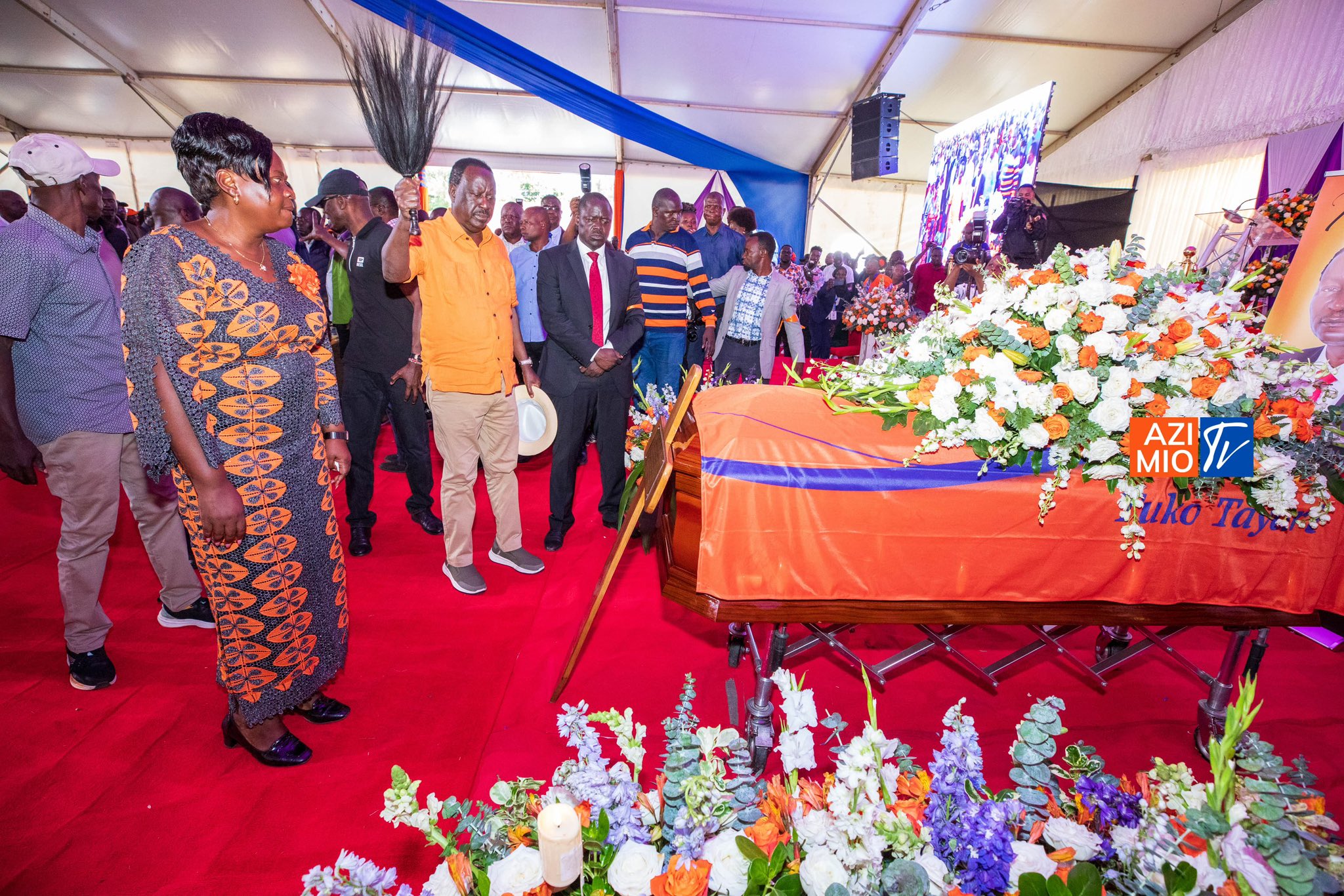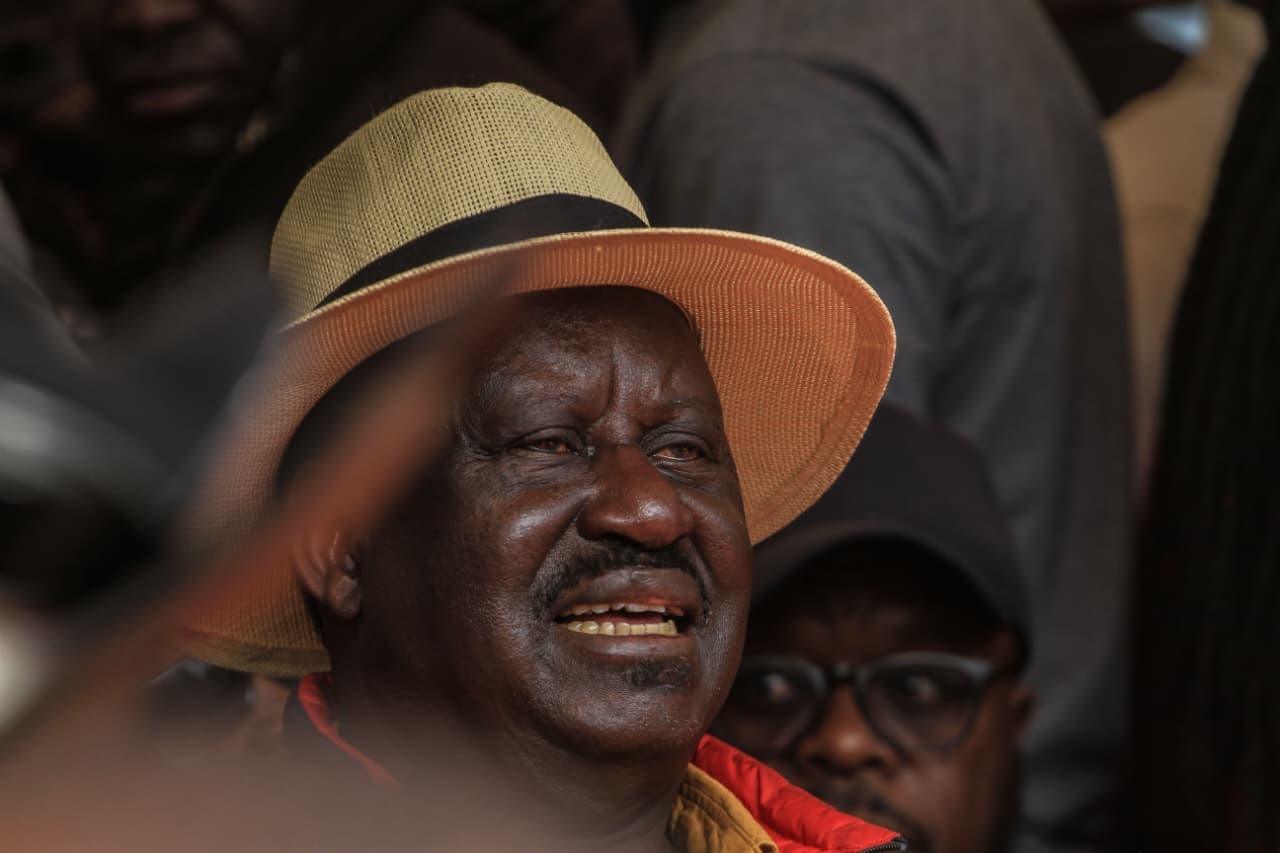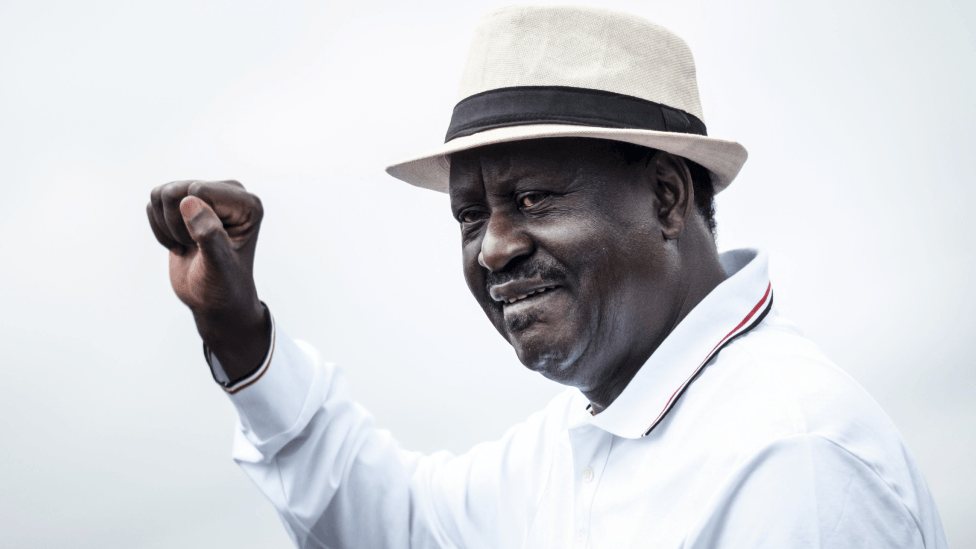

On 12 February 2020, during the state burial of former
President Daniel Arap Moi at Kabarak, Raila Odinga moved mourners when he broke
into a Luo dirge, waved his fly whisk several times above Moi’s casket, and
chanted repeatedly, “Jowi! Jowi! Jowi!”
The phrase “Jowi” is deeply rooted in Luo language and
tradition. It refers to a buffalo, an animal that symbolizes strength, courage,
and fearlessness.
In Luo culture, the buffalo represents someone whose
presence is powerful and whose influence cannot be ignored.
Because of this, chanting “Jowi, Jowi” is reserved for
highly respected people — leaders, elders, and heroes — individuals who led
large lives and left strong legacies.
It signals that the
deceased was more than ordinary and that their departure is a loss felt by
entire communities.
Raila’s performance at Moi’s burial was not spontaneous or
mere theatrics. It followed traditional Luo funerary rituals.
One important element of that ritual is the fly whisk,
called orengo in Luo.
It is a status symbol carried only by elders of certain
standing and used during important ceremonies.
When one raises or waves the whisk during a funeral, it is a
sign of mourning and a call for peace and dignity.
At Moi’s burial, Raila held his fly whisk aloft, moving it
slowly over the casket before waving it six times in a deliberate gesture of
honour.
The act signified deep respect in Luo custom. He also
performed a Luo dirge — a mournful song in his mother tongue — that preceded
the “Jowi” chant.
The lyrics implored mourners to reflect on the fleeting
nature of life and the uncertainty of what lies ahead.
The “Jowi” ritual has deep historical roots in Luo society.
Raila’s late father, Jaramogi Oginga Odinga, used the same chant when mourning
Mzee Jomo Kenyatta after his death in 1978.
According to Luo elders, the tradition has been preserved
for generations and is widely understood as a high form of respect.
The chant is used only for great figures — political
leaders, industrialists, or religious icons — people who left an imprint on
their community.
It is never used for
children or for those who have not yet attained social status or proven
leadership. The unwritten rules of the tradition consider age, service, and
reputation as key.
Raila has often used “Jowi, Jowi” at funerals of prominent
people to signal respect and connect the moment to tradition.
He uses it to show that the loss being mourned is one of
national or cultural significance.
At Moi’s burial, Raila explained that he wanted to send the
former president off “as a true African,” acknowledging both Christian and
traditional customs.
By using the fly whisk and chanting “Jowi,” he connected the
solemn state occasion to his own cultural heritage — a gesture that bridged
Kenya’s ethnic and political divides.
In 2023, during the funeral service of former Education
Cabinet Secretary Professor George Magoha, Raila once again invoked the “Jowi”
chant.
Dressed in traditional attire and holding a whisk, shield,
and spear, he tapped the casket before chanting “Jowi, Jowi” in a symbolic
farewell. His gesture was widely interpreted as a mark of honour and a continuation
of his father’s legacy.
The meaning behind “Jowi” extends beyond the literal. It
carries multiple layers of cultural and emotional significance.
It is first and foremost a recognition of greatness. When
“Jowi” is invoked, it declares that the person being mourned lived a large,
influential life. It acknowledges leadership, courage, and sacrifice.
It is also a reminder of mortality. The dirge that precedes
the chant reflects on the transience of life, reminding mourners that all
people — regardless of their power or wealth — return to the same earth.
In that sense, “Jowi” is both a cry of honour and a moment
of humility.
The chant also connects mourners to African identity. It
bridges the modern and the traditional, showing that in moments of deep
emotion, Kenyans still turn to indigenous customs to express grief.
It affirms that cultural practices remain an essential part
of the country’s moral and social fabric.
When Raila Odinga chants “Jowi, Jowi” while waving his fly
whisk, he is doing more than performing a ritual. He is summoning history,
culture, and memory.
He is evoking the spirit of leadership and respect that
transcends time and tribe. For many Kenyans, the chant has come to symbolize an
African way of saying farewell — solemn, dignified, and deeply human.
“Jowi, Jowi” is therefore more than a word. It is a
statement of identity, a sound of reverence, and a salute to greatness. When
Raila utters it, he is not only mourning; he is honouring. He is saying, this
life mattered — and must be remembered.


![[PHOTOS] Baba has left us orphans - Kisumu residents mourn Raila](/_next/image?url=https%3A%2F%2Fcdn.radioafrica.digital%2Fimage%2F2025%2F10%2F910325a1-f207-4932-b9bb-eae6f91fdead.jpg&w=3840&q=100)










